Dear Friends,
Today we begin our summer book club, reading The Elegance of the Hedgehog by Muriel Barbery. As many of you know, I’ve hosted summer book clubs over the years, but was not able to host one last summer. However, when I knew I would be in France for the month of June for work reasons, I knew immediately that I wanted to read this book together— it is a gem. This week we discuss the first two sections of the book: Marx and Camelias.
Our book takes place almost entirely at 7 Rue de Grenelle, an elegant apartment building occupied by wealthy upper-middle class occupants. The story is told by two narrators: Renée Michele and Paloma Josse. Renée, the concierge of the building, is an autodidact who reads voraciously but has hidden her intelligence from the occupants of the building, who tend to overlook and condescend to her. The other narrator is Paloma Josse, an aggressively intelligent but unstable twelve year old who, looking at the shallow lives of those who surround her (including her parents), determines that if she finds no reason why life is worth living, she will commit suicide on her 13th birthday and burn down her parents grand apartment. Through their journal entries, we see the small, bumbling, and human world of 7 Rue de Grenelle.
I hope you will already have begun to fall in love with the sarcasm of Renée, with her love of grammar and tea, her sharp wit which often softens into pathos and poetry. That you will have already laughed despite yourself at Paloma’s guileless descriptions of the world, her dogged pursuit of a meaning of life, and her comic description of things. And that you will already have developed a sympathy: for Renée’s resistance of despair and Paloma’s hunger for authenticity.
To me, it seems that Paloma and Renée seek answers to two different questions.
Paloma is open with us as readers about her question: what makes life worth living? Is it Art (with a capital A, as both she and Renée describe it)? Purpose? Accomplishment? Wonder? She goes through life looking for an answer to this question, honestly looking. She is frustrated with what she sees as the unwillingness of the adults around her to admit their vulnerability and fear: of death, of insignificance, of the feeling that life doesn’t mean anything. She shows more bravery than the adults around her by admitting and accepting these fears, and seeking with all her humorous heart to find a reason to live. Though she has not yet found her “reason” to live, she ends this chapter with the resolve that she wants to “build” something with her life.
The question that drives Renée is, I believe, more subtle and unspoken: what does it mean to be alive? Not merely to exist, but to be alive, awake, consciousness, and attentive. I think this is captured in a story Renée tells of her childhood. Born to a large family and neglected by her parents, Renée describes the moment that a teacher calls her by name:
“Renée.
That meant me. For the first time, someone was talking to me, saying my name. Where my parent’s habitually merely gestured or grunted, here was a woman with clear eyes and a smiling mouth standing before me, and she was finding her way to my heart, saying my name, entering with me into a closeness I had not previously known existed. I looked around me and saw a world that was suddenly filled with colours. In one painful flash I became aware of the rain falling outside, the windows streaked with water, the smell of damp clothing, the confinement of the corridor, the narrow passageway vibrating with the press of pupils, the shine of the coat racks with their copper hooks where capes made of cheap cloth were hung close together, and the height of the ceiling, which to the eyes of a small child, was like that of the sky…”
Renée later calls this moment of being called by name her “second birth.” Notice how this one small act sharpens Renée’s awareness of all that is around her, awakens in her a sense of awe even at the very ordinary, dreary day at primary school. But Renée seems to sometimes waver between existence and life. Her husband, with whom she was very happy, has died and soon her best friend Manuela will retire to Portugal. She worries about what her life will be like when there is no longer anyone around to call her by name. Will she recede into mere existence?
Renée draws herself out of despair through little secular rituals— tea (her recounting of which is one of the most delightful parts of the book), watching certain beautiful movies. Each of these little practices draw her out of here biological existence into the present of beauty, and the contemplation of what she refers to several times as “eternity”:
“The camellia against the moss of the temple, the violet hues of the Kyoto mountains, a blue porcelain cup— this sudden flowering of pure beauty at the heart of ephemeral passion: is this not something we can aspire to? And something that in our Western civilisation, we do not know how to attain?
The contemplation of eternity within the very movement of life.”
So both our characters write about their every day experiences, “the very movement of life” and seek within them a reason for being alive and the possibility of not merely existing but living. And at the end of our chapter something happens which will change everything: one of the apartments is going up for sale. What will it mean for Paloma and Renée?
For the rest of my thoughts on this week’s chapters, I hope you’ll listen to the podcast attached to this email, and then use the questions below to discuss this week’s reading both here on Substack and in your own real life book clubs and meet ups. Below the questions you’ll find the schedule for the next few weeks of reading, but don’t worry if you get behind:
Discussion Questions:
What do you think the Camellias represent in this chapter? Why is the entire chapter named after Camellias?
What do you think “Art” means for Paloma and Renée? Why is it capitalised?
How does the book club work?
Obtain the book! It is very popular, so you should not have trouble finding it in your local library or bookshop. And I always encourage people that if you’d like to purchase, purchase at a local book shop! The audiobook is also fun.
Read the chapters assigned each week. I propose the following schedule:
June 11th: Chapters Marx and Camellias
June 18th: Chapter On Grammar
June 25th: Chapter Paloma
I realise this reading plan is going at quite a clip, but I think you’ll find that it is a very easy book to read. Furthermore, I want to finish the book while I’m in France. And the nice thing is that if you get behind on the reading, you can always pop back in the discussions later in the summer!
Listen to the weekly podcast. I will post them here, but they should be available for free on Spotify, iTunes, etc. etc.
Join in the conversation! I will post reading questions on this Substack to encourage conversation and discussion. You can answer them in the comments, and I encourage you to engage with other people’s comments as well. Unfortunately, only paid subscribers can comment on Substack (this prevents me from getting weird comments from strange people on the internet). If, however, you do not want to pay (understandable) there are several options: start your own in real life bookclub! Even if it is assemble as meeting for coffee a few times with a friend. Or post a discussion questions on twitter or instagram, which I will promote so other book clubbers can find you. Of course, no matter what, the podcast episodes will be freely available and you can always read my ramblings about it here.
I’ll also be posting my Paris Pages each week on Saturday while I’m in France. So do subscribe if you’d like to receive those as well.
Alright friends— signing off. Can’t wait to hear what you make of the book.
Warmly,
Joy









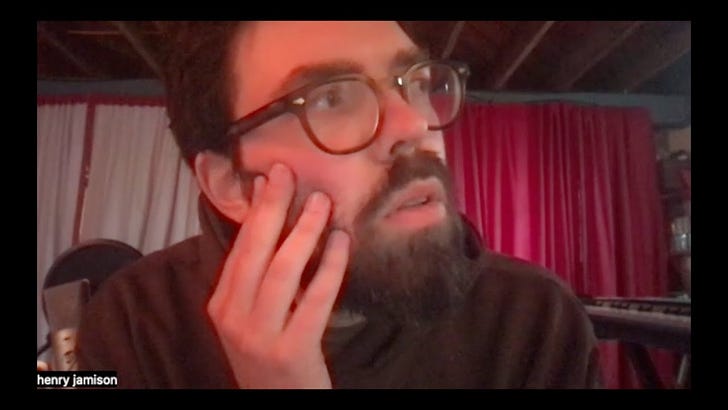
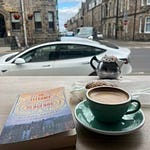
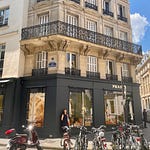
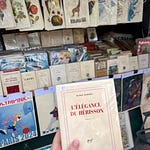
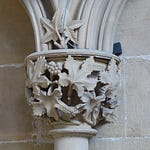
Share this post